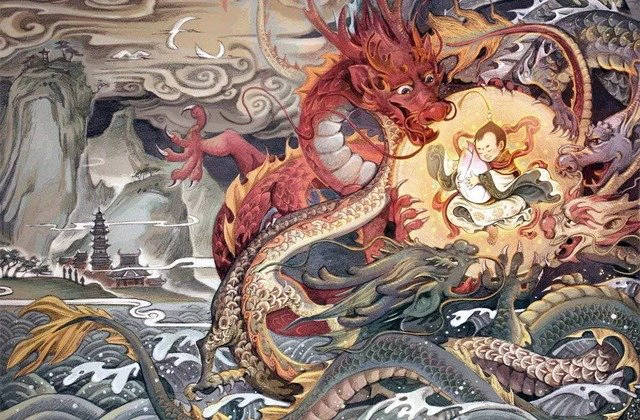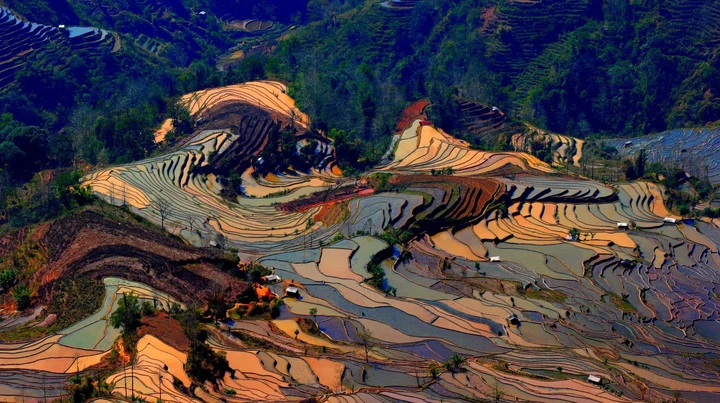Chinese traditional wedding customs
Wedding is a "life-long event" in a person's life, and its status in the transition of life is very important, so ancient and modern Chinese and foreign people attach great importance to this life ritual. Along with this important life ritual, a colorful and distinctive marriage culture has emerged.
1. 4 gifts to bring to the wife's house for the first time
When you go to your girlfriend's house, of course, prepare a gift for your future father-in-law and mother-in-law, and learn about each other's living habits, preferences, taboos, etc. The gift should not be too heavy or too light, it must be just right, and you must communicate with your girlfriend well. The first is tobacco, alcohol, milk or supplements, choose one according to the actual situation.

Next is tea. If her father likes to drink tea, he can buy tea leaves with more delicate packaging. The tea leaves are very deep, so consider buying them carefully. If you are a tea lover, you can easily distinguish the quality of the tea from the bad. Two boxes of good tea and a set of high-quality tea sets will definitely make people's eyes shine.

The third is skin care products. Most mothers love beauty. You can buy skin care products, cosmetics and other gifts. Skin care products must be selected from big brands, and it is best to be a set. It looks matching and is convenient to use. You can ask the female abbot's mother's usual brand or whether there is a long-favored brand.

The fourth is jewelry. In the selection process, the skin color of the mother-in-law should be considered first. If it is fair, you can choose blue or green gemstones. If it is yellowish, you can choose jewelry such as pink or red tourmaline. With the increase of age, mothers may Will prefer red accessories, can add joy and good luck. The price is not too expensive. You can buy decent tourmaline or garnet jewelry within 2,000 yuan, which is economical and shows full sincerity in front of your mother-in-law.

2. Chinese rural marriage customs
Rural marriage customs refer to the marriage customs of people in rural China. The rural marriage customs are actually more interesting than the urban marriage customs, because the rural people marry more according to the set of rules of their ancestors. Taking the Chaoshan area as an example, the traditional wedding customs of rural people in the ancient Chaoshan area were to perform six rituals, including proposing relatives, asking names, receiving small gifts, receiving dowry gifts, choosing auspicious dates, and welcoming the bride.

3. Tang Dynasty Marriage Customs
The Tang Dynasty can be said to be a very influential dynasty in China. The development of this dynasty is very prosperous. People from many countries have come to the Tang Dynasty to pay tribute to the royal family of the Tang Dynasty, do business and so on. Marriage in the Tang Dynasty was also very particular. The main process includes: proposing relatives, asking names, receiving small gifts, receiving dowry gifts, choosing auspicious dates, and welcoming the bride.

4. Qing Dynasty Marriage Customs
In the Qing Dynasty, people all knew that people wore long robes, jackets and phoenix crowns, while ordinary people wore coarse clothes. So people in the Qing Dynasty married aristocrats very solemnly. People in the Qing Dynasty paid attention to three books and six ceremonies: including the letter of appointment, the letter of ceremony, the letter of welcome, the acceptance, the inquiring of the name, the acceptance of small gifts, the acceptance of the bride price, the selection of auspicious days, and the reception of the bride.

5. Marriage Customs in the Han Dynasty
The ancients in the Qin and Han dynasties also actively formulated a series of laws to regulate people's behavior, which formed the original marriage law. The people of the Han Dynasty were very particular and required people to strictly abide by the six rituals, which are the basic forms of traditional wedding ceremonies. The six rituals in the marriage customs of the Han Dynasty are the six steps of marriage in ancient Chinese society. Even after a series of changes, the ancients are still based on the six rituals. The six steps include proposing marriage, asking for names, formal engagement, sending dowry gifts, divination for auspicious days, and welcoming the bride.

6: Chaoshan Wedding Customs
Chaoshan marriage custom refers to the marriage custom used by Chaoshan people at the junction of Guangdong Province and Fujian Province. Chaoshan area has always been a commodity distribution center in eastern Guangdong, southeastern Jiangxi and southwestern Fujian. The land in this area is fertile and agricultural products are abundant. Chaoshan people still retain the traditional marriage customs left by their ancestors, but they have also undergone historical evolution. The current Chaoshan marriage customs have been simplified, some old marriage customs have been abandoned, and they will be simplified and new. Chaoshan people are very wealthy, so they all learn Western marriage customs, including church weddings, travel weddings and so on. However, there are still some Chaoshan families who prefer traditional Chaoshan weddings. The main steps: proposing marriage, betrothal, betrothal.

7. Hakka marriage customs
The Hakka is a Han ethnic group with the characteristics of ethnic minorities in mountainous areas, and it is also one of the ethnic groups in which the Han nationality is relatively scattered and weak in the world. The Hakka people started from the Song Dynasty because of the intermarriage of the Han nationality at the junction of Guangdong, Jiangxi and Fujian with the surrounding ethnic minorities. After thousands of years of evolution, the Hakka people have become today's Hakka people. Hakka culture has a long history, and today's Hakka weddings still retain traditional customs and are full of strong ancient Chinese flavors. There are three main steps: negotiate the marriage, get engaged, and marry the bride.





